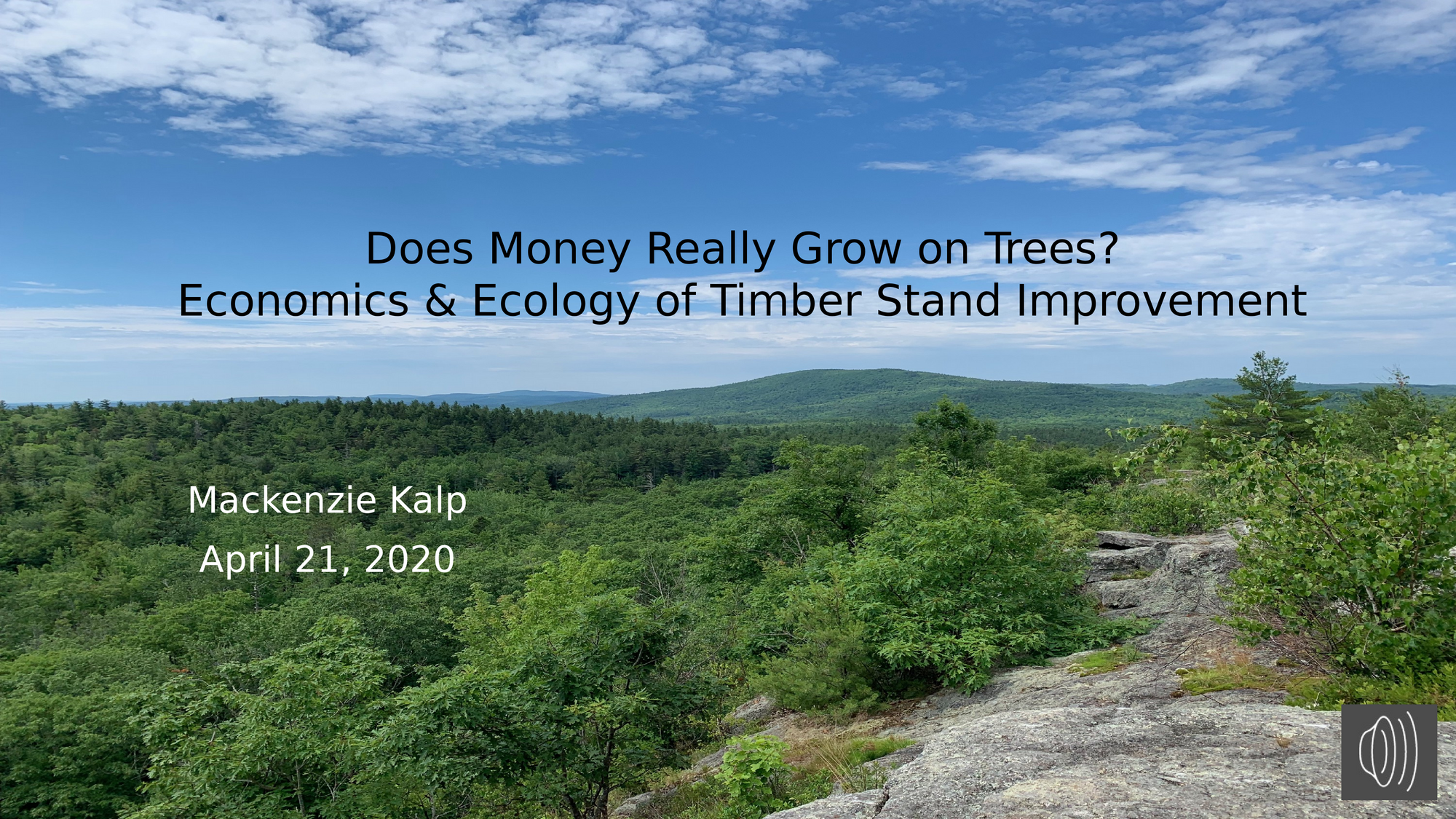Title:
Does Money Really Grow on Trees? The Economics & Ecology of Timber Stand Improvement
Slideshow Presentation
Best viewed by downloading
Preview Converted Images may contain errors

Abstract
Timber Stand Improvement (TSI) is one management method by which landowners can enhance future economic and ecological values of their forests. Forest management requires money, time, and work, so landowners may want assurance that their efforts are worthwhile.
In Strafford, New Hampshire, the Blue Hills Foundation completed TSI activities on approximately 2,000 acres of stands that are dominated by eastern white pine (Pinus strbous L.) between 1988 and 2003. Their work provides a case study opportunity to examine whether TSI is a worthwhile management technique. Analysis includes testing the projected versus actual timber prices and sensitivity to interest rates.
Assessment of TSI success goes beyond the monetary value of timber. Snags, coarse woody debris, and non-plant species composition also provide important ecological services such as wildlife habitat and carbon sequestration. When assigned a monetary value, these services can be included in determining the overall change in stand value after TSI. The outcomes of this research will inform landowners about the circumstances in which TSI is a worthwhile management strategy for their forests.
Authors
| First Name |
Last Name |
|
Mackenzie
|
Kalp
|
Leave a comment
Submission Details
Conference GRC
Event Graduate Research Conference
Department Natural Resources (GRC)
Group Oral Presentation
Added April 16, 2020, 7:13 p.m.
Updated April 16, 2020, 7:14 p.m.
See More Department Presentations Here